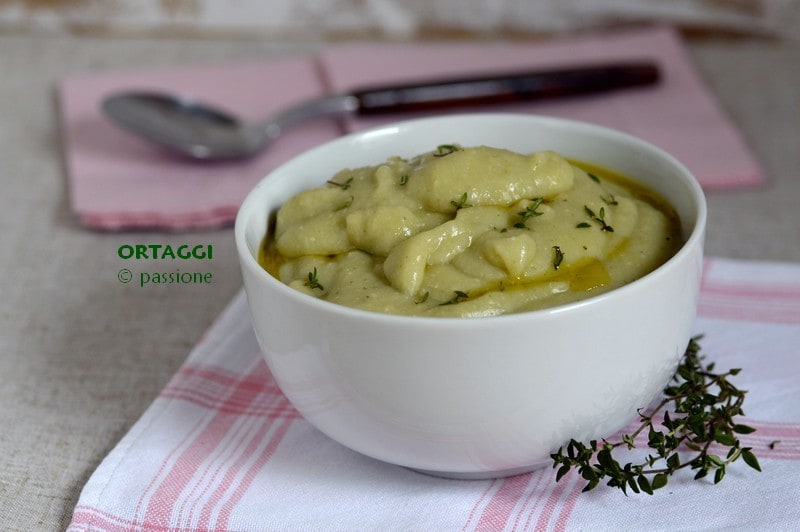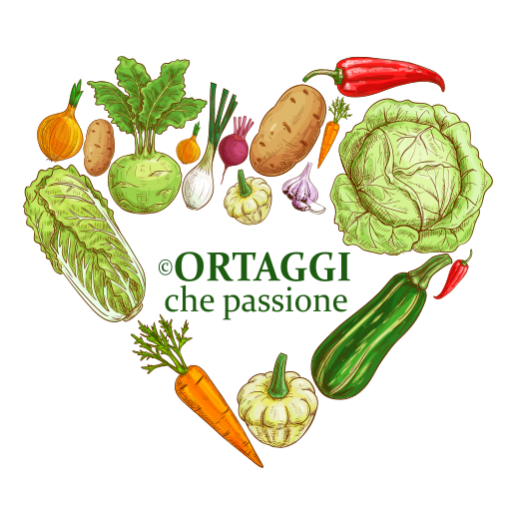The cauliflower cream is a vegetable puree with legumes and cereals. A creamy and complete soup, an excellent comfort food for the winter season. A light soup without potatoes, pasta, gluten, and milk. Easy to prepare with the Bimby.
SEASONALITY of #cauliflower from October to April (depending on the variety).
RECIPES with cauliflowers

- Cost: Economical
- Preparation time: 15 Minutes
- Portions: 8 people
- Cooking methods: Stove
- Cuisine: Healthy
- Seasonality: Fall, Winter, and Spring
Cauliflower Cream
- 22.9 oz Cauliflower
- 5.3 oz Lentils
- 5.3 oz Rice (or another gluten-free cereal*)
- 5.3 oz Carrots (or onions or leeks)
- 4.2 cups Water
- 0.7 oz Granular vegetable broth
- as needed Extra virgin olive oil
- as needed Herbs (or cinnamon powder or paprika)
* Gluten-free cereals: amaranth, buckwheat, millet, quinoa, rice, sorghum, teff.
Cauliflower Cream
First, soak the lentils for a short time (not necessary, but improves cooking).
Wash the cauliflower and vegetables and chop them into large pieces. In a large pot, pour the water, vegetable stock cube, cauliflower, and vegetables. Rinse the lentils and rice and add them to the soup.
Then bring it all to a boil and continue cooking for about 20 minutes. Once all the ingredients are tender, blend them with an immersion blender. Serve the cauliflower cream hot with a drizzle of extra virgin olive oil and a mix of crumbled dried herbs, or if you like, with croutons.
STORING the cauliflower cream
To store the cauliflower cream, cool it down, transfer it to an airtight container, and keep it in the refrigerator for up to 4 days. In the freezer, it lasts for 6 months or more, remember to label the container with the preparation date and reheat it before consuming.
Curiosities
How to select-buy cauliflower?
Choose firm, unblemished, and tightly closed cauliflowers. The outer leaves should be vigorous and of a nice bright color.
When not to eat cauliflower?
You may need to avoid it if you have digestive issues like gas and bloating. Its fiber content is modest, but the presence of fructans and polyols makes it highly fermentable in the intestine: therefore, it might be advised against for those suffering from irritable bowel syndrome or flatulence, especially if consumed boiled.
What are the benefits of cauliflower?
There are different varieties of cauliflower, characterized by different colors and nutritional profiles: green (with a high amount of chlorophyll), purple (a source of anthocyanins and carotenoids), orange-yellow (rich in beta-carotene), besides the classic white. In general, cauliflower is characterized by high content of vitamin C, phosphorus, potassium, and copper. Like all Cruciferae, cauliflower contains: sulforaphane – a powerful antioxidant with anti-inflammatory properties, diindolylmethane – a molecule with putative activity supporting hepatic metabolism of estrogens, indole-3-carbinol – useful for liver detoxification, folates – fundamental in numerous processes including red blood cell formation, DNA synthesis, and fetal nervous system development.
Dr. nutritionist Pacini

